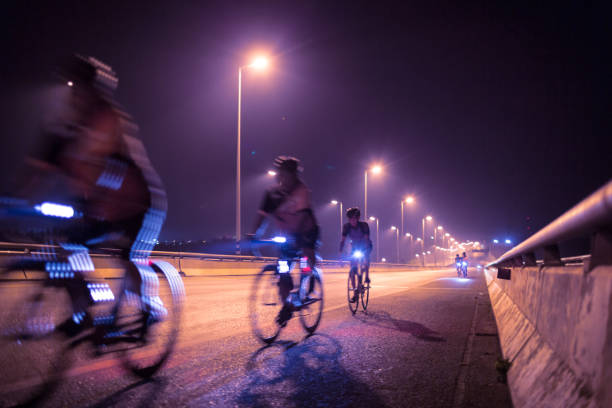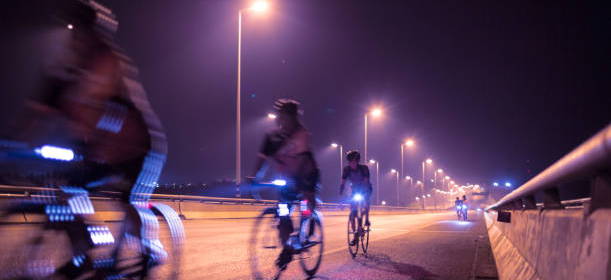
10 Tips for Riding Your Electric Bike in the Dark
If you're a cyclist, you know that e-bikes have revolutionized the way we get around our cities. They make it easier than ever to ride your bike at night, but that doesn't mean there aren't some risks involved. Whether your commute takes place during daylight hours or late at night, there are always things to think about when riding an electric bike in the dark—especially if you're new to riding at night!
Here are ten tips for making sure your next ride goes smoothly:
Get $50 off your first order
Sign up for special offers and updates
1. Start with a mechanical check of your bike.
When you're ready to ride, it's important to check a few things first. First and foremost, make sure your bike is in good working order. Use the checklist below as a starting point:
●Check the brakes and tires. Are they fully functional? Is there any sign of damage or wear? Is the tire pressure correct for the conditions? If you have disc brakes, are they oiled adequately? If this is an electric bike, has your battery been changed since its last use?
●Check the chain and gears. Is there any sign of rust on either element of this system—either in your cassette or derailleur setup—that may indicate impending failure or poor lubrication? How does each gear shift feel when you use them (the shifter should move smoothly without much effort).
Do all components move freely without sticking up/down from their normal position when under tension from pedaling force directed onto them by ridership weight distribution upon frame contact points with ground surface elements like pebbles/rocks etcetera...

2. Always wear a helmet and other important protective gear
We're not going to lie, we get it—you're tired of hearing us say "always wear a helmet." We know how much you love your electric bike, and we want your ride to be as safe and fun as possible. But the fact is that helmets are one of the most important parts of riding an e-bike in the dark.
Sure, you can see where you're going without one. But what if something goes wrong and you fall off your bike? That's when helmets come in handy.
●Helmet - It's easy to forget this when you're not going very fast, but electric bikes can go pretty fast—and even if you're just out for a leisurely ride, it's always better to be safe. And it's also not just because we're big believers in safety—it's also because helmets are the best way to keep your head warm when you're riding your electric bike in the winter. If you're riding on cold days, these helmets will keep your ears nice and toasty.
And make sure your helmet fits properly and is not too loose or too tight. If the helmet does not sit comfortably on your head, you might risk losing it at fast speed. And wear a bike helmet even if you're only going for a short ride around the block.
The helmet should have both white and yellow reflective panels on the top so drivers can spot you easily when they're looking straight ahead. Since most people won't be looking down at their right feet while driving, make sure these reflectors are facing forward so they catch light from above rather than reflecting off the ground directly beneath them.
●Lights - All electric bikes must also have a light that is visible from 300 feet away, to the left and right of the bike. This light can be a headlight or taillight, but both need to be in working order.
All NAKTO Ebikes have the most reliable lights you need. NAKTO Classic Ebike has a red reflector on rear fender so you’re always visible from all angles when approaching from behind you. This will ensure drivers are aware of your presence before they turn into your path.
●Other Protective Gear - You should also not forget to wear gloves, bring raincoat gear, and paddings if applicable. Carry a flashlight, even if you have lights on your e-bike. It could come in handy for an unexpected flat tire or other problem that would require walking home in the dark.
You should also carry extra batteries for any gear that uses them (like flashlights). Carry some water and food with you as well as other essentials like first aid kits, cell phones, and spare tires if possible.
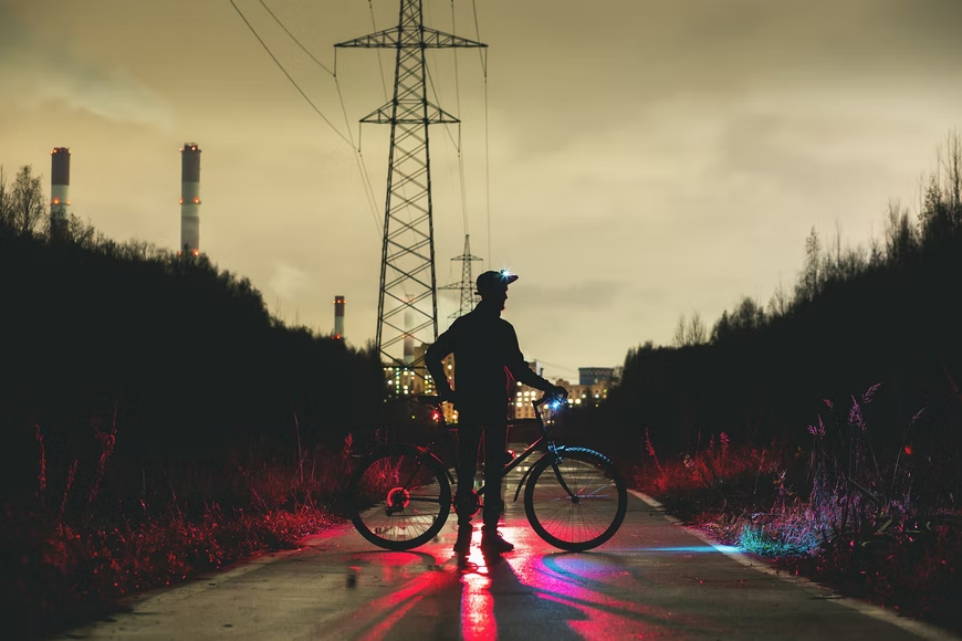
3. Have a backup battery and plan your route.
It's important to have a backup battery in case you run out of power, but also make sure you know where the nearest charging station is so you can get back home. If your electric bike runs out of power and you can’t pedal that far but don't have a backup battery, you're basically stuck.
This is especially true if you're riding at night, because the sun will be down, and it can get pretty dark out there. You don't want to find yourself in the dark with a dead battery and no way of getting home.
And if you plan your route in advance—whether that means mapping it out or just knowing where all the streetlights are—you'll know what to expect and won't have to stress about getting lost. A good route is a key to getting home safely—even if it's not the fastest way. You should always have an escape route in mind in case something goes wrong.

4. Watch out for street hazards.
This is one of the biggest reasons to ride your electric bike at night: it can be a bit safer. But that doesn't mean it's not a riskier time to be on the road. Be extra careful about the possibility of potholes, cracks in the road, ice, branches, gravel, and other debris, or anything else in the road that could cause you to lose control of your bike.
Apart from wearing reflective gear and turning on any lights that came with your bike, being alert helps ensure that other drivers can see you and keep them from running into you. It will also help make sure you can see what's going on around you as well—other cars coming toward you, cyclists approaching from behind or other pedestrians walking across the street without looking first (or at all).
Watch out for water, too (both on the road like rain and in natural bodies of water). Keep an eye on where the ground is underneath your wheels as well as how close it is to your tires since they could get stuck in mud or gravel if not careful. You can bring a waterproof bag, too, if you want to carry anything you might need along your rides, such as food or clothes, but don't let that stop you from riding in bad weather!
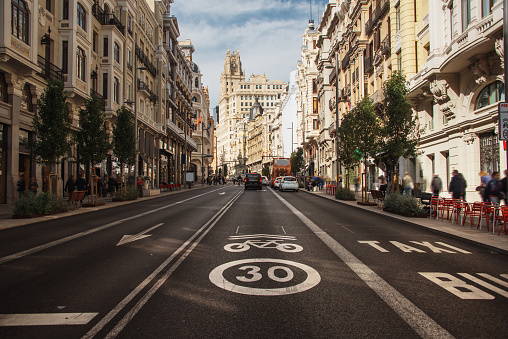
5. Adjust your ride to the conditions.
It’s always important to adjust your ride to the conditions. Electric bikes are a great way to get around in bad weather, but some things are better left to human power. For example, if it's raining or windy, you may want to slow down and pay extra attention to avoiding puddles and gusts of wind that could unbalance you.
If it's dark out and cold, don't go quite as fast as usual; keep your speed down so that you can stay warm in the winter chill. Likewise with hot days: if there are thunderstorms forecast for later in the day—or even just high temperatures—you might want to consider keeping an eye on them before heading out on a long ride through town later that afternoon.
6. Adjust your expectations.
If you’re used to riding in the dark, adjust your expectations. You won’t be able to ride at full speed or on challenging terrain without risking a crash, so take it easy. If conditions are wet, don’t ride. The same goes for if they are too cold or hot (unless you have an electric bike with a heated seat).
Also, make sure that before turning left or right, you check whether cars are parked along those streets so as not to collide with them while turning corners. Don’t expect that the roads are always clear. And always adjust to adverse weather conditions, such as rain which makes the ground slippery.
7. Take it slow and be aware of other cyclists.
When riding in the dark, it's important to be aware of other cyclists and road users. The best way to ride your electric bike in the dark is by taking it slow and being extra cautious. If you're riding in an area that you don't know well, make sure to stop and look around before proceeding. And if you're riding somewhere unfamiliar, try to do a little research beforehand so that you know what obstacles may be present.
You should also take care when approaching junctions, crossings, and roundabouts. If you're caught up in the flow of traffic on a busy road, stay close to the curb so that your bike won't get knocked off course by vehicles overtaking you from behind.
Be aware of your terrain too: what do you see around you? Is there anything that could cause an accident? For example, if there is nothing but grassland on either side of the path ahead then it would be wise not to accelerate too much since this might result in losing control over your e-bike because there will be no obstacles to slow down before hitting them at high speed.
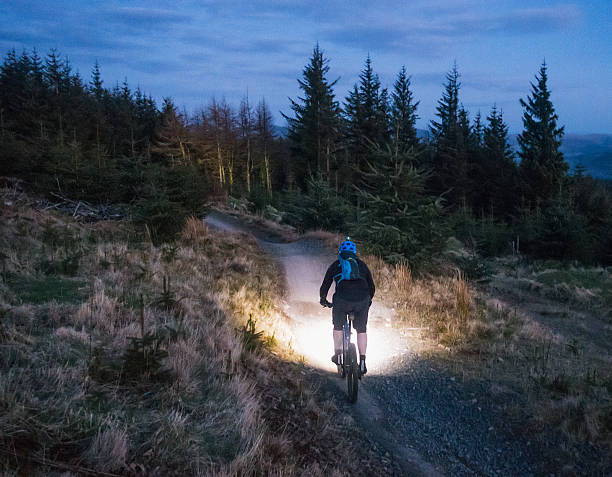
8. Be careful about wearing headphones or earbuds
You want to avoid distractions as much as possible when riding an e-bike in the dark, so you can hear what's going on around you. If you're wearing headphones or earbuds, it's hard to hear sirens or other cars coming up behind you. Also, people might not be able to see your signal lights or know that you're turning left or right.
9. Wear bright, reflective clothing, and carry reflective safety gear as well.
Wearing bright, reflective clothing is a good way to stay visible. If you're riding at night or in dim light, it's important to make sure that cars can see you from all sides. Choose clothing with reflectors on the front and back, as well as any other parts of your body that are going to be visible.
10. Plan ahead and know your route.
The next step to riding safely at night is planning ahead and preparing for the worst, such as falling off your bike, tires bursting, bike gear malfunctioning, and getting lost. If you don't know where you're going, it's easy to get lost or distracted by your surroundings and that can lead to an accident.
That’s why before heading out on your bike, make sure that you:
●Understand the terrain. You'll need to understand what obstacles might be in the way of your bike ride—things like potholes and construction zones can both cause problems for cyclists if they aren't aware of them beforehand.
●Know how long it will take you to get from point A to point B (and back). Keeping track of time is especially important on longer rides, as it gives riders an idea of when they should start thinking about stopping for food or water breaks along the way.
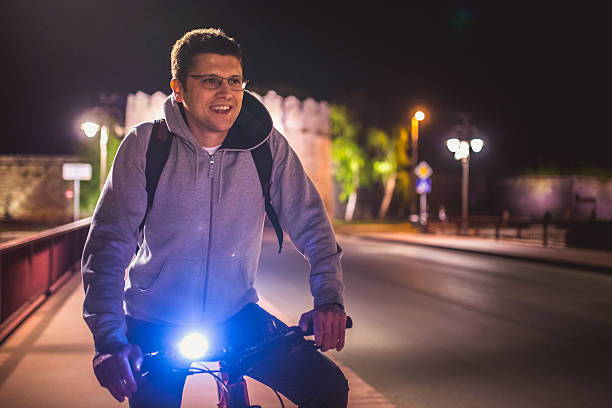
Conclusion
So that’s it, you’re now ready to ride your electric bike in the dark! Just don’t forget to take the precautions in the article above to ensure a safe ride always. With a little planning and some practice, you’ll be able to ride your electric bike safely no matter what time of day or night.
It might take some getting used to at first, but once you start riding in the dark regularly it becomes second nature. The best way to avoid unsafe conditions is by being prepared for them using this guide and by only riding a trusted e-bike in the market, such as the NAKTO bike.
NAKTO aims to produce technological innovation and development, creating high-quality products which allowing consumers to enjoy the efficiency and convenience brought by E Bike at reasonable price.
But most importantly, enjoy yourself! I know this is going to sound cliche, but it's true: riding an electric bike at night is one of the most fun things you can do on two wheels.
Don’t forget to share this article with your friends and family so more people are safe riding in the dark.

